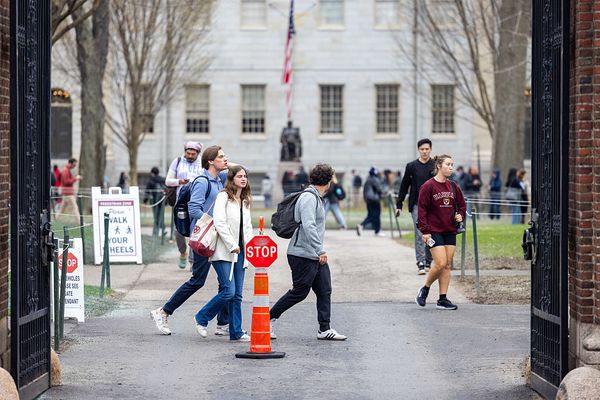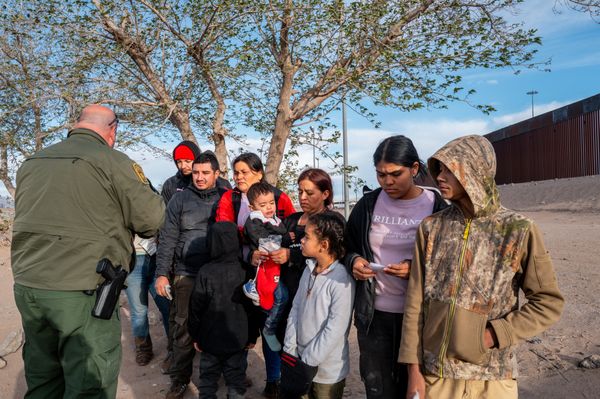
Varanasi, India – In India, some members of Generation Z prefer temples over nightclubs.
Shivam Dwivedi, a native of Prayagraj district in the northern Indian state of Uttar Pradesh, prays at a neighbourhood temple at least twice a week.
The 19-year-old and his friends have shunned trips to beach and party destinations popular with this age group. Instead, Dwivedi and his friends Saurabh Shukla, 21, and Anand Dwivedi, 20, prefer to visit important Hindu shrines, some in remote corners of the country.
The friends, who are studying engineering, told Al Jazeera they get mental peace and find a “source of energy” on their trips to religious places.
“We feel a connect with the divine. … There is a source of energy that flows inside us that gives us mental peace as pressure of education and career building often becomes too hectic to handle,” Shukla told Al Jazeera while standing in line outside Kashi Vishwanath Temple in the holy city of Varanasi in Uttar Pradesh.
Parties and a dazzling nightlife do not attract them, Shivam Dwivedi added. “We have never planned a visit to Goa and other such places where people go just for raging parties, casinos and nightlife. We want peace and positivity that is available in religious places and in nature,” he explained.
Impact of social media
Faith-based holidays make up 60 percent of India’s domestic tourism, according to a March report by the real estate consultancy CBRE South Asia Pvt Ltd.
The industry is estimated to grow at a compounded annual rate of 16.2 percent and is likely to reach $4.6bn in size by 2033, according to the report.
Some of that business is being driven by members of Gen Z (those born between 1997 and 2012).
The consecration of the Ram temple in Ayodhya in January and coverage of the event in social and news media have helped fuel interest.

Giresh Vasudev Kulkarni, founder of Temple Connect, a company that provides information on Hindu temples to global pilgrims, said the widespread use of social media coupled with curiosity among young people has helped lead to an increase in spiritual tourism in the country.
“The young generation is completely hooked to social media where people are creating content by reaching even those places which were considered far off and remote till a few years ago. Such contents when posted on YouTube and other social media platforms generate curiosity among people, especially youths to visit there for making similar content or to offer prayers,” Kulkarni explained.
Santosh Singh, founder of Spiritual Tour, a Varanasi-based company that offers tours to religious places, pointed out that the inauguration of the Ram temple in Ayodhya was a major breakthrough in the rise of spiritual tourism.
New roads connecting Varanasi and Ayodhya, both cities in Uttar Pradesh, have cut travel time down to four hours from six, he said.
Pilgrims have also been tacking on a trip to Sarnath, about 10km (6 miles) northeast of Varanasi. It is considered the place where Gautama Buddha gave his first sermon after attaining enlightenment.
“Since January, we are witnessing 60 to 70 percent growth in business,” Singh told Al Jazeera. “Earlier, there used to be an off season between April to September, but now there is a massive rush, and even 2,000 odd hotels in Varanasi are finding it difficult to accommodate the surge in crowds,” Singh said.
In April alone, Varanasi received about 8.2 million visitors, according to RK Rawat, deputy director of tourism for the Varanasi and Vidyanchal division. And about 150,000 visitors on average visit the Ram temple per day since it opened to the public, the state’s chief minister, Yogi Adityanath, told local media.
Government efforts
In 2015, the federal government introduced a scheme called the Pilgrimage Rejuvenation and Spiritual Heritage Augmentation Drive, or PRASHAD, which is Hindi for food offered to the gods. Under that scheme, it has spent 16.3 billion rupees ($195.43m) to develop infrastructure around 73 religious sites.

It has also introduced high-speed trains connecting some of these sites with other big cities and has proposed international airports in cities like Ayodhya and Puri, providing easier access to foreign tourists. It also offers interest-free loans to states to set up malls to showcase their unique products.
State governments, too, have played a role in attracting more tourists to important shrines.
In January, the Odisha government opened a 75-metre (250ft) passage that it had built around the outer walls of the Jagannath Temple in Puri, which it developed at an investment of 8 billion rupees ($96m). Its air-conditioned sections as well as drinking water and toilet facilities are a welcome escape for devotees from the searing heat and humidity as they wait in line to enter the temple.
“The corridor has led to the rise of tourists … because the passage is chaos-free,” said Jatin Panda, senior administrator for security for the Shree Jagannath Temple Office, which manages temple affairs.
“We are also witnessing a rise in teenage and young visitors coming to visit the temple post-COVID. Earlier, we used to have 10 young visitors out of every 100 coming to the temple, but now, it has risen to at least 40 young people out of the same numbers. It might be connected to increasing belief in the divinity [or] job insecurity post-pandemic,” he said, pointing to the 10.47 million tourists in Puri in 2022, the latest data available, up from 10.35 million tourists in 2018.
Business booming
The rise in spiritual tourism has been profitable for the sectors connected with it, including hospitality and retail, which are jumping on the trend with wellness packages, including yoga retreats, meditation centres, and food and shopping around those themes.
The CBRE report identified 14 Indian cities – including Amritsar, Ajmer, Varanasi, Ayodhya and Puri – as key cities witnessing this boom.
“The rapid expansion of spiritual tourism in India is driving the growth of the country’s faith-based tourism market,” said Anshuman Magazine, chairman and CEO of CBRE India.
Debasis Kumar, vice president of the Hotel Association of Puri, told Al Jazeera that the average occupancy of the hotels in the city has shot up from 70 percent in the pre-pandemic era to 90 percent now.
“Puri has a unique advantage of having a temple and a sea beach that attracts the young generation,” Kumar said.
“It is difficult to find quality manpower [to keep up with the tourist influx], and the layoffs during COVID have been haunting the industry. We are also noticing young people booking rooms in the hotels, and most of them are also driving solo to reach here and spending time in the temple. The chaos-free corridor attracts the young generation.”







